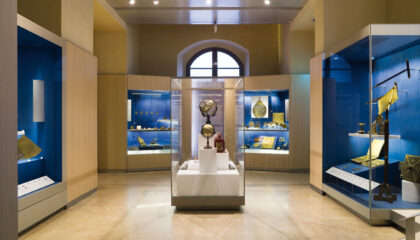Museo Galileo
Firenze, Italy
2008-2010
At the end of a restoration process that has revolutionized the exhibition space and its furnishings, the Institute and Museum of the History of Science has reopened to the public with a new name: Museo Galileo. The name accentuates the importance of Galileo’s legacy to this museum, an institution with an inestimable wealth of instruments and experimental devices. The restoration of the Palazzo Castellani also increased the architectural prominence of the museum’s headquarters. The elegant display cases are of the latest generation and highlight the aesthetics of the objects while at the same time guaranteeing their conservation.
Exhibition design: Studio Associato Guicciardini & Magni Architetti, Florence
The challenge
The extremely customized nature of this project was the biggest challenge. And the Laboratorio Museotecnico was flexible enough to be able to meet the needs of this new, international museum where the calibrated use of light, colors and materials enhance the presentation of the objects and provide a clear path for the visitor.
The solution
Goppion’s elegant new-generation showcases have been designed with innovative case fittings and materials that serve to not only enhance and elevate the aesthetic quality of the objects contained, but also guarantee perfect conservation. A special rear-illuminated case hosts the core of the collection of the Accademia del Cimento, a collection of historic glass case instruments of inestimable value. The visitor’s view of its precious content remains uninterrupted by virtue of a uniform glass of almost 6 meters in length at a weight approaching 450 kg, which can still be opened by a single person. Because of logistical limitations on the construction site, more than 580 square meters of glass and 46 tons of steel for all caseworks were brought into the Palazzo through a single window on the first of the building.
In 2011, the museum won the European Museum Academy Prize.




